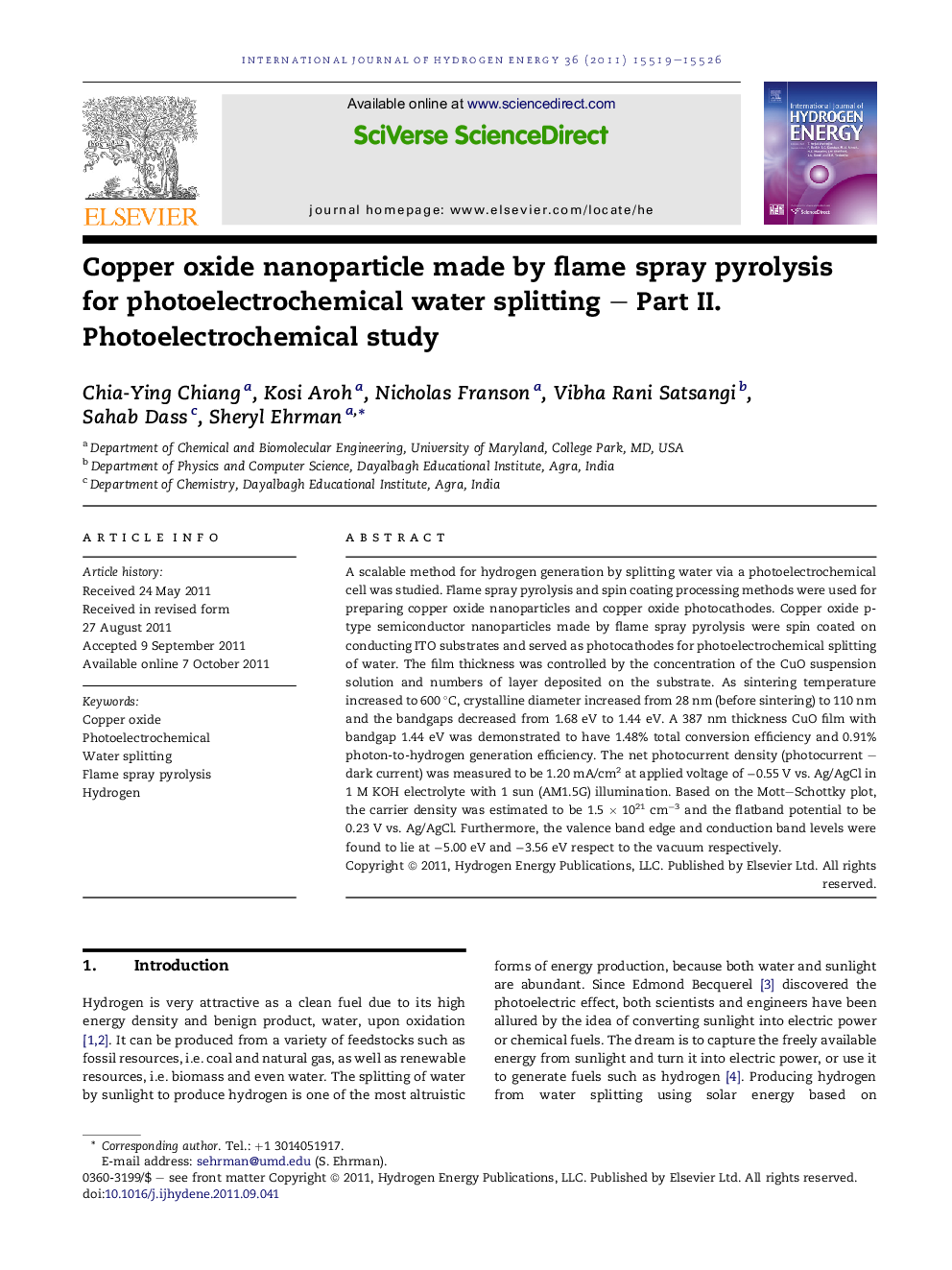| Article ID | Journal | Published Year | Pages | File Type |
|---|---|---|---|---|
| 1277349 | International Journal of Hydrogen Energy | 2011 | 8 Pages |
A scalable method for hydrogen generation by splitting water via a photoelectrochemical cell was studied. Flame spray pyrolysis and spin coating processing methods were used for preparing copper oxide nanoparticles and copper oxide photocathodes. Copper oxide p-type semiconductor nanoparticles made by flame spray pyrolysis were spin coated on conducting ITO substrates and served as photocathodes for photoelectrochemical splitting of water. The film thickness was controlled by the concentration of the CuO suspension solution and numbers of layer deposited on the substrate. As sintering temperature increased to 600 °C, crystalline diameter increased from 28 nm (before sintering) to 110 nm and the bandgaps decreased from 1.68 eV to 1.44 eV. A 387 nm thickness CuO film with bandgap 1.44 eV was demonstrated to have 1.48% total conversion efficiency and 0.91% photon-to-hydrogen generation efficiency. The net photocurrent density (photocurrent – dark current) was measured to be 1.20 mA/cm2 at applied voltage of −0.55 V vs. Ag/AgCl in 1 M KOH electrolyte with 1 sun (AM1.5G) illumination. Based on the Mott–Schottky plot, the carrier density was estimated to be 1.5 × 1021 cm−3 and the flatband potential to be 0.23 V vs. Ag/AgCl. Furthermore, the valence band edge and conduction band levels were found to lie at −5.00 eV and −3.56 eV respect to the vacuum respectively.
► We used flame spray pyrolysis and spin coating process for preparing CuO PEC cells. ► We decreased the bandgap of CuO by increasing the sintering temperature. ► We demonstrated our CuO PEC cell to have 1.48% total conversion efficiency and 0.91% photon-to-hydrogen generation efficiency. ► We also calculated the valence and conduction band edge lying at −5.00 and −3.66 eV respect to vacuum respectively.
